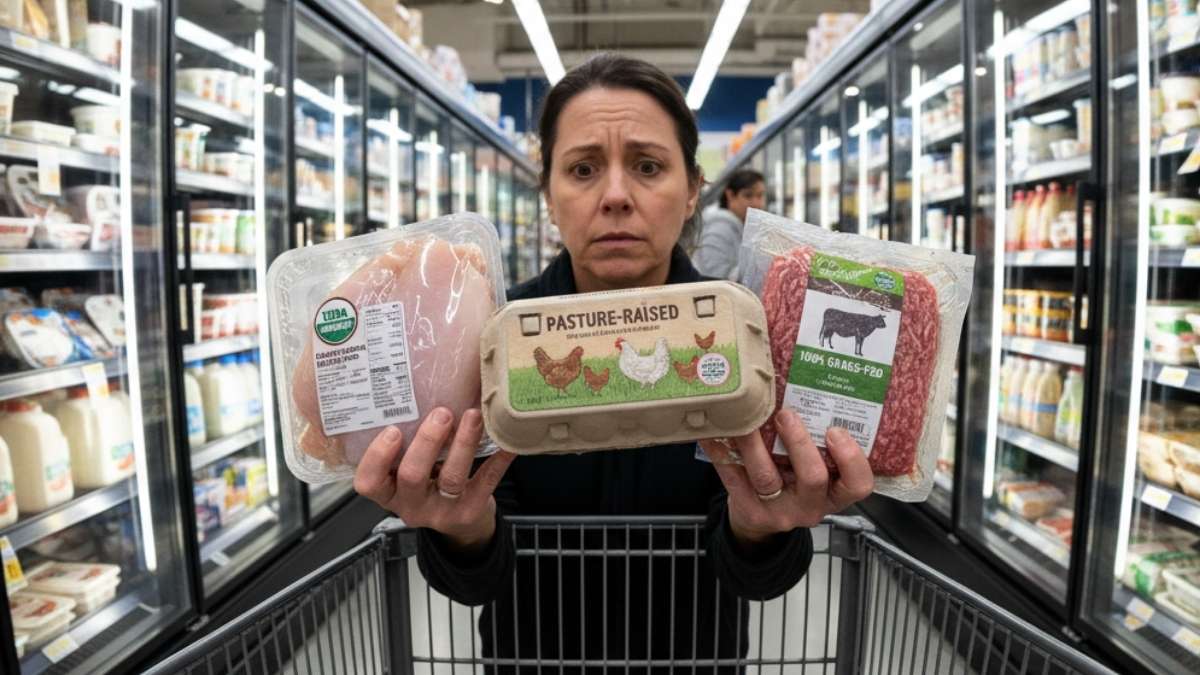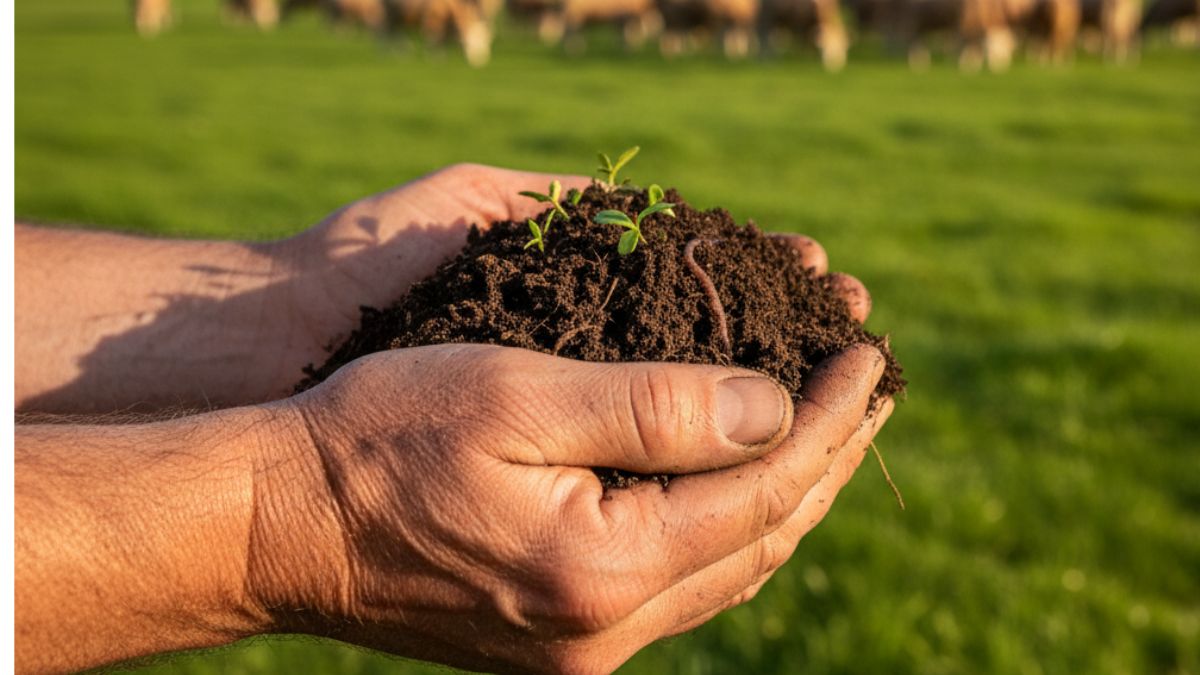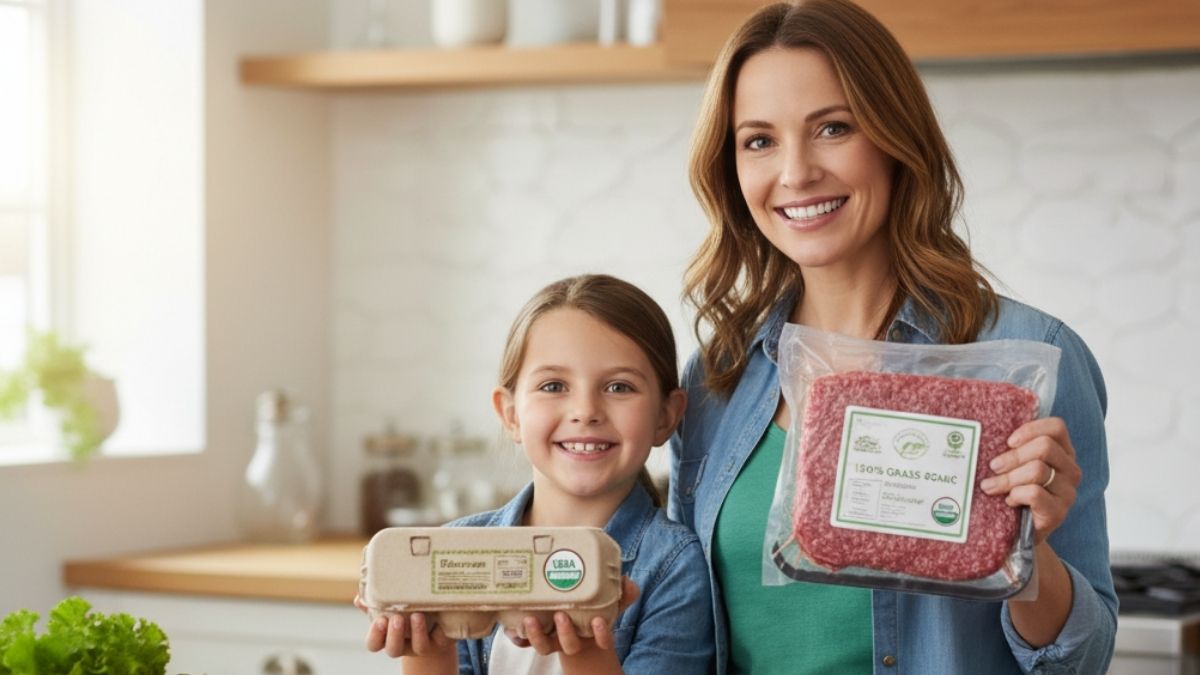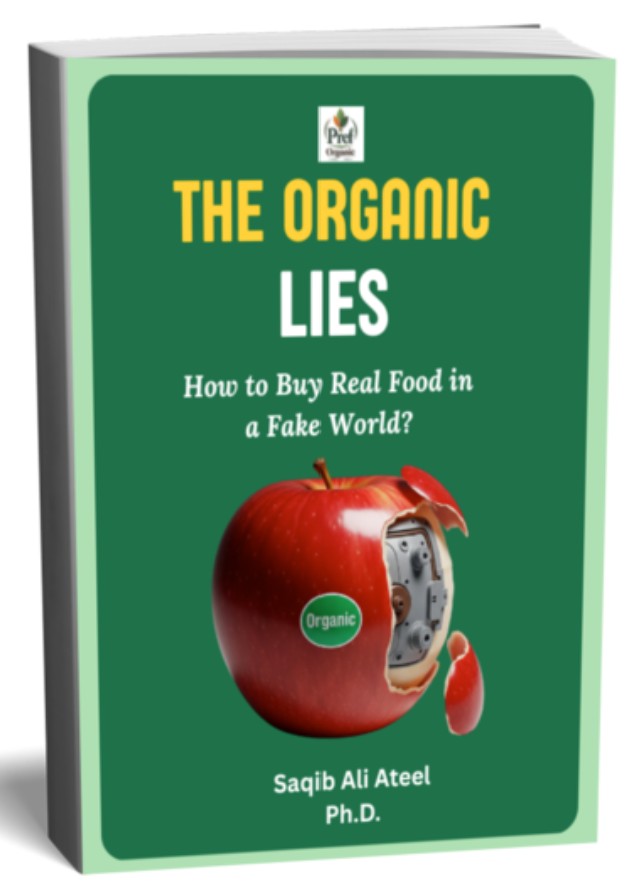Grass-Fed vs. Pasture-Raised: A PhD Farmer's Verdict on
the "Triangle of Confusion"
The grass-fed vs pasture-raised question is one that hits you after the chaos of the grocery store is over. You’re in your kitchen, unpacking the week's haul. You place the premium-priced carton of "Pasture-Raised" eggs on the counter next to the "100% Grass-Fed" ground beef you splurged on.
A quiet wave of doubt washes over you. You invested in these promises for your family, but what did you actually buy? Are these labels just different chapters of the same beautiful story, or is one a verifiable fact and the other a marketing fable? And how does the "USDA Organic" seal—the one you've learned to trust—fit into this high-stakes puzzle?
You’re frozen by a "triangle of confusion." Are these terms the same? Is "Grass-Fed" better than "Organic?" Am I being "ripped off" by this "Pasture-Raised" label, which looks healthy but feels vague?
You are right to be skeptical.
As a student of agricultural marketing and a farmer who has lived his life with his hands in the soil, I can tell you this: you are not just comparing food. You are comparing three completely different philosophies. One is a holistic, legally-backed system. One is a specific (but valuable) single-issue promise. And one is, quite often, just a marketing story.
My promise to you is to be the calm in this chaos. Let's take these three premium labels out of the "basket" and place them side-by-side. We will build a simple hierarchy—a framework you can use forever—to make a confident choice, every single time.
The Quick Verdict: Your 60-Second Hierarchy 📝
You’re busy. You need a tie-breaker, fast. Here is the definitive hierarchy of trust for the meat, dairy, and egg aisle.
1. The
Foundation (Best): USDA Organic 📜
This is your holistic, legally-backed foundation. It is a complete system that guarantees no antibiotics, no growth hormones, and 100% non-GMO, organic feed. It also includes baseline standards for animal welfare and outdoor access.
2. The
Bonus (Better): "100% Grass-Fed" 🐄
This is a powerful bonus that applies only to feed for ruminants (cattle, sheep). It is a single-issue promise. It is NOT a complete system. Non-organic "100% Grass-Fed" beef could still be given antibiotics or graze on pesticide-treated fields.
- The Gold Standard: The ultimate choice is USDA Organic and 100% Grass-Fed. This is the foundation + the bonus.
3. The
Gamble (Be Skeptical): "Pasture-Raised" 🐔
This is the "new Natural." For poultry and eggs, this term has NO legal definition from the USDA. It is a marketing story designed to make you feel good. Without a separate, third-party seal (like "Certified Humane" or "Animal Welfare Approved"), this label is a gamble.
Feeling the fog clear? Good. Now, let’s dig into the "insider's proof" so you can see precisely why this hierarchy will protect your family.

The "Basket of Clarity": Decoding the Triangle
of Labels 🧺
You need to understand what each of these labels actually promises—and, more importantly, what it doesn't.
1. The Foundation: What "USDA Organic"
Guarantees 📜
Think of the "USDA Organic" seal as the strong, concrete foundation for your house. It’s a complete, legally-backed system that covers all the big concerns you have.
When you see that green seal on meat, poultry, eggs, or dairy, it is a legal guarantee that the animal was:
- Raised without antibiotics or growth hormones. Period.
- Fed 100% organic, vegetarian feed (no animal byproducts).
- Fed feed grown without synthetic pesticides or GMOs.
- Given "outdoor access." This is a key point of nuance. For cattle, it's a requirement to be on pasture. For chickens, this can unfortunately mean a small, screened-in porch.
The Organic seal is your non-negotiable. It is the only label that protects your family from antibiotics, growth hormones, and GMO feed in one legally-enforced system. It's the perfect foundation. But for ruminants, we can build on it.
2. The Bonus: What Does "Grass-Fed" Mean? (The
Insider's Answer) 🐄
This is one of the most misleading labels in the store. You’re asking, what does grass-fed mean? The answer will shock you.
In 2016, the USDA revoked its official definition of "Grass-Fed." This means that today, the term "Grass-Fed" on a package, by itself, is unregulated.
- The "Grass-Finished" Loophole: Nearly all cattle are "grass-fed" for the first part of their lives. But most are then "finished" for the last few months in a crowded feedlot with a diet of grain, which quickly fattens them up. A package can legally say "Grass-Fed" and still come from an animal that spent its last months in a feedlot.
- The Real Promise: The only term you should trust is "100% Grass-Fed." This indicates the animal ate only grass and forage for its entire life.
But here is the most critical distinction in the grass-fed vs organic debate: "100% Grass-Fed" is a feed standard, not a complete system.
A "100% Grass-Fed" animal can still be:
- Given antibiotics and growth hormones.
- Fed grass or hay that was sprayed with synthetic pesticides.
This is why "100% Grass-Fed" is a bonus, not the foundation. It’s a powerful upgrade, but it doesn't replace the holistic protection of the Organic seal.
The absolute gold standard for beef and dairy is when you see both seals on one package: "USDA Organic" AND "100% Grass-Fed." That is the foundation + the bonus. That is the farmer's promise you can trust.
3. The Gamble: What Does "Pasture-Raised" Mean?
(The Marketing Story) 🐔
Now we come to the label that causes the most confusion and, in my opinion, is the most deceptive: "Pasture-Raised." You’re asking, what does pasture-raised mean?
I call this label "The New Natural."
For the products it's most commonly used on—poultry and eggs—the term "Pasture-Raised" has ZERO legal definition from the USDA.
It is a marketing word. It’s a story.
It’s meant to create a "health halo," a beautiful image of chickens roaming free in a grassy meadow. But it guarantees nothing. A "Pasture-Raised" chicken could be in a crowded barn and never see the light of day.
This is where the pasture-raised vs organic comparison is so important.
The "USDA Organic" label at least requires "outdoor access" and guarantees no antibiotics and organic feed. A standalone "Pasture-Raised" label guarantees none of those things.
On its own, the "Pasture-Raised" label is a gamble. You are trusting a marketing department, not a legal standard.
The only time this term has meaning is when it's accompanied by a trusted, third-party animal welfare seal, such as "Certified Humane" or "Animal Welfare Approved by AGW." These organizations do have strict, inspected standards for what "pasture-raised" means.
Without one of those seals, you are better off trusting the "USDA Organic" seal every time.

The Showdown: Grass-Fed vs. Pasture-Raised vs. Organic 📊
Let's put this all on one simple table. This is your "Grocery Aisle Verdict" for the next time you're feeling confused.
| Feature | ✅ USDA Organic (The Foundation) | ✅ 100% Grass-Fed (The Bonus) | ❓ Pasture-Raised (The Gamble) |
|---|---|---|---|
| Legally-Backed? | ⚖️ Yes. Strict federal law. | 🤷♂️ No. USDA definition was revoked. Trust "100%" or 3rd-party seals. | 🚫 No. Zero legal definition for poultry or eggs. |
| Antibiotics Banned? | ✅ Yes. | ❌ No. (Unless also Organic) | ❌ No. (Unless also Organic) |
| Hormones Banned? | ✅ Yes. | ❌ No. (Unless also Organic) | ❌ No. (Unless also Organic) |
| GMO Feed Banned? | ✅ Yes. | ❌ No. (Unless also Organic) | ❌ No. (Unless also Organic) |
| Guarantees Feed? | 🌾 Yes. (100% Organic Feed) | 🌿 Yes. (100% Grass/Forage) | ❓ No. |
| Regulates Welfare? | ❤️ Yes. (Sets baseline standards) | 🚫 No. (It's a feed standard only) | 🤷♀️ No. (Unless 3rd-party certified) |
Your Confident Takeaway: The "Organic First"
Framework 🛡️
You came here for a clear verdict, for a simple rule to end the confusion. Here it is.
From this day forward, I want you to use the "Organic First" Framework. It’s a simple, two-step process that moves you from confusion to confidence.
Step 1: Look for the USDA Organic Seal FIRST.
This is your non-negotiable foundation. When you see this seal, you have instantly guaranteed your family is protected from antibiotics, growth hormones, and GMO feed. This is your high-trust baseline.
Step 2: Look for the "Bonus" Label SECOND.
- For Beef & Dairy: After you find the "Organic" seal, look for a "100% Grass-Fed" seal. This is your gold-standard upgrade, ensuring the animal ate its natural diet.
- For Eggs & Poultry: After you find the "Organic" seal, look for a trusted third-party seal like "Certified Humane" or "Animal Welfare Approved" if a higher level of welfare is your goal. Ignore the standalone "Pasture-Raised" word.
You’re in control now. You’re not just a shopper; you’re an informed protector. You have the "insider's proof" to see past the marketing stories and identify the real promise. You can confidently build a basket of food that is truly rooted in the health of the land.
This is a critical part of navigating the supermarket. When you're ready to decode the rest of the labels in the store, your next step is our full T2 Pillar guide.
Explore the complete guide: [Navigating the Supermarket: A PhD Farmer's Survival Guide]
Learn about other label tricks: [Natural vs. Organic: Spotting the Gimmick]
Decode processed foods: [Fortified vs. Organic: Which is Healthier?]

For Further Reading: Your Path to Deeper Knowledge 📚
I believe in empowering you with the direct sources. If you want to see the proof for yourself, here are the authority sites where you can verify the facts we've discussed.
1. USDA National Organic Program – "Organic 101"
o Why It's Valuable: This is the official "rulebook" from the USDA. It clearly explains what the Organic seal guarantees regarding feed, welfare, antibiotics, and more. This is your source of truth for the "foundation" label.
2. American Grassfed Association (AGA) – "AGA Standards"
o Why It's Valuable: Since the USDA revoked its definition, organizations like the AGA have become the real authority on grass-fed claims. This page shows you the rigorous, third-party-inspected standards for a true "100% Grass-Fed" label. You can see for yourself how it compares.
3. Certified Humane – "Pasture Raised Standards"
o Source Link (Click for the standards for laying hens or poultry).
o Why It's Valuable: This site proves that "Pasture-Raised" can be a meaningful term, but only when backed by a real certifier. This shows you the detailed, inspected rules (like 108 sq. ft. per bird, outdoor access year-round) that a real pasture-raised farm must follow, exposing the emptiness of the unregulated marketing term.
